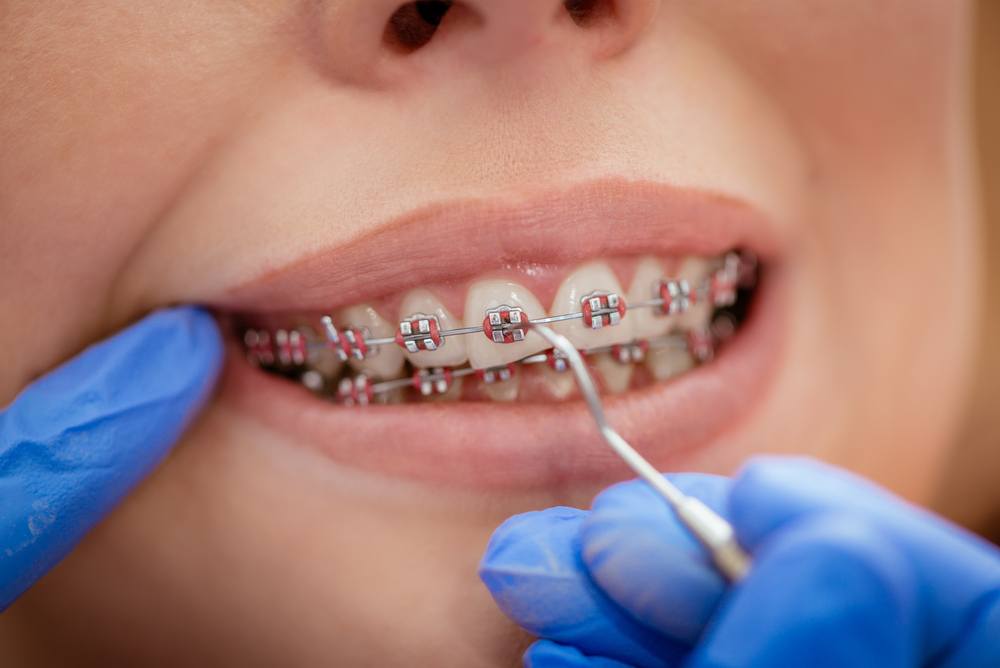Expert Cumming Braces and Aligners: What to Know Prior To You See
Expert Cumming Braces and Aligners: What to Know Prior To You See
Blog Article
Comprehensive Guide to Orthodontics Procedures for Fixing Dental Misalignments
Comprehending the details of each procedure, including their devices, advantages, and possible downsides, is important in making educated choices regarding one's orthodontic therapy. As we browse via the detailed overview to orthodontic treatments for remedying oral misalignments, the complex details of each technique will unravel, dropping light on the path towards a unified and useful oral alignment.
Orthodontic Procedures Overview

Along with conventional braces and clear aligners, orthodontists may also advise various other interventions like headgear, palatal expanders, or retainers to address certain placement problems (cumming orthodontist). These treatments are customized per individual's unique requirements and might include a mix of treatments to accomplish the desired results. Routine changes and surveillance are important components of orthodontic treatment to make certain progression is on track and to make any kind of required alterations in the process. By undergoing orthodontic procedures, individuals can not only attain a straighter grin but additionally improve their general oral health and function.
Typical Braces: Just How They Work
When considering orthodontic therapies for dental imbalances, traditional dental braces attract attention as a reliable method for fixing teeth positioning. Conventional dental braces are composed of brackets, wires, and bands that interact to use continual stress on the teeth, progressively relocating them into the preferred placement. The brackets are connected to the teeth using a special adhesive, and the wires are threaded via the braces. By changing the stress of the wires, orthodontists can regulate the direction and force applied to each tooth, assisting them right into proper positioning gradually.
One key facet of exactly how traditional dental braces work is the procedure of bone remodeling. As stress is related to the teeth with the dental braces, the bone surrounding the teeth is reshaped to support the new tooth positions. This remodeling is crucial for the lasting stability of the remedied alignment. Clients will require normal adjustments at the orthodontist's office to guarantee the dental braces proceed to apply the right pressure for reliable teeth motion.
Invisible Aligners: Disadvantages and pros
These clear, customized trays are basically invisible when worn, making them an enticing option for people seeking why not find out more a more visually pleasing orthodontic treatment. People can get rid of the aligners prior to consuming or cleaning their teeth, reducing the threat of food obtaining stuck in the home appliance and simplifying the cleaning process.

Surgical Orthodontic Options
Surgical treatments in orthodontics existing sensible alternatives for addressing intricate oral misalignments that might not be effectively resolved with traditional orthodontic treatments. While conventional braces and unnoticeable aligners can deal with many orthodontic issues, specific situations require surgical intervention to accomplish optimum results. Surgical orthodontic choices are commonly suggested for serious malocclusions, considerable jaw discrepancies, and cases where the underlying bone framework requires adjustment to attain proper placement.
One typical surgical orthodontic procedure is orthognathic surgery, which entails repositioning the jaws to fix practical issues such as problem talking or eating. This surgical treatment is often performed in partnership with an orthodontist who aids line up the teeth before and after the procedure. Surgical orthodontics might also entail procedures to reveal affected teeth, More Bonuses eliminate excess gum tissue, or improve the jawbone to develop an extra unified face account.
Prior to considering surgical orthodontic alternatives, patients undertake a thorough examination to figure out the requirement and prospective benefits of such interventions. cumming orthodontics. While surgery may seem complicated, it can significantly boost both the function and aesthetics of the smile in cases where standard orthodontic treatments fail
Retainers and Post-Treatment Treatment

Failure to conform with post-treatment care directions can result in relapse, where the teeth slowly move back in the direction of their original settings. Constant retainer wear, great dental health, and regular oral exams are crucial for preserving the outcomes accomplished via orthodontic surgical treatment and ensuring the lasting security of the fixed oral placement.
Final Thought
In final thought, orthodontic procedures provide different alternatives for remedying oral misalignments. Surgical orthodontic alternatives are available for extra extreme imbalances. In general, orthodontic procedures can effectively enhance dental health and wellness and aesthetic look.
As we navigate via the detailed overview to orthodontic procedures for dealing with dental imbalances, the complex details of each method will certainly unravel, losing light on the path towards a unified and useful dental alignment. - cumming aligners
One of the most common orthodontic therapies is the use of braces, which are composed of steel braces and cables that apply gentle stress to slowly shift teeth into the desired placement.When thinking about orthodontic treatments for oral imbalances, typical braces stand out as a reliable approach for dealing with teeth positioning. In addition, unnoticeable aligners might not be suitable for news complicated orthodontic concerns that require more substantial teeth movement, as they are normally advised for moderate to modest cases. Retainers are personalized orthodontic gadgets created to hold teeth in their fixed placements after the completion of orthodontic therapy.
Report this page